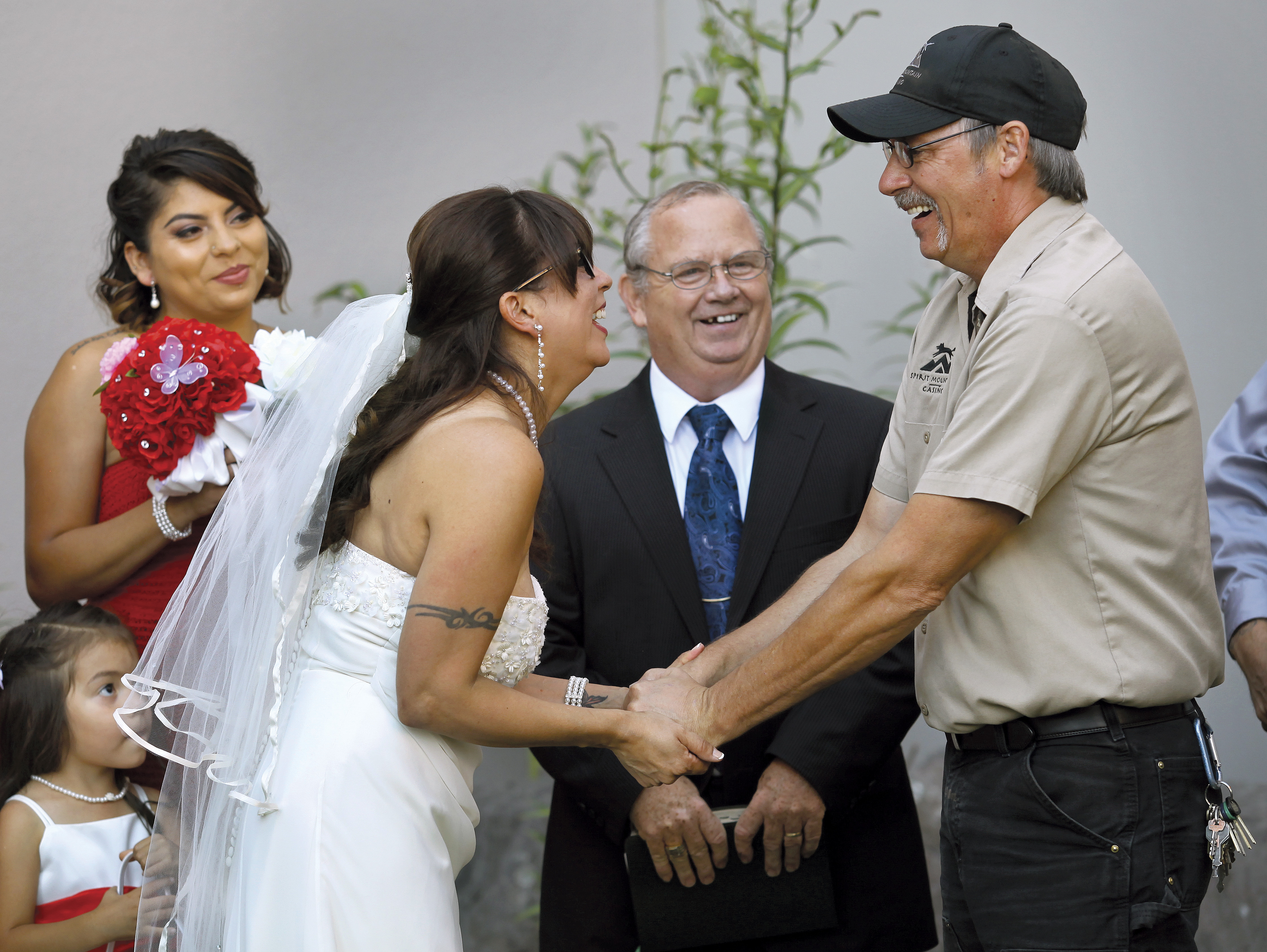Tribal Government & News
Yesteryears -- Sept. 1, 2020

2015 – Tribal member Clint “Tony” Folden had a big surprise when his bride-to-be showed up at Spirit Mountain Casino during his lunch break for a surprise wedding. “Oh my goodness,” he said as he walked into the courtyard with his hand covering his mouth. Family and friends gathered for the occasion, which was also Folden’s birthday, by singing him “Happy Birthday” as he scanned the scene and gathered himself. Tribal Elder Lew Younger officiated the ceremony, which was the first to be held in the casino’s courtyard. The wedding was originally scheduled for three days later, but the bride decided on a different plan. After the wedding, Folden returned to work to complete his shift.
2010 – The Tribe’s new plankhouse was set to open. It included a main building, woodshed and handicap accessible ramps. Guests from as far south as California and as far north as British Columbia were expected to attend the grand opening ceremony. “This is a big deal because it is the first plankhouse that we have been allowed to build since being removed to the Reservation,” Tribal Language and Culture Specialist Bobby Mercier said. He had been planning the event with a team of people including Tribal Elders Carol Logan and Dolores Parmenter, and Tribal members Lenny Logan, Eirik Thorsgard, Brian Krehbiel and Gregg Leno.
2005 – The Oregon State Parks and Recreation Department and the Tribe joined forces to bring the history of nearby Fort Yamhill back to life through an interpretive project that would create Fort Yamhill Park. The park would focus on the cultural history of the site through experiences of soldiers, Tribal members and the interaction between the two. It was to include a walking trail, restored officers’ quarters and culturally sensitive signage for visitors. Fort Yamhill was once a military camp that supervised traffic between Willamina and the Oregon coast, and served a buffer between the newly created Grand Ronde Reservation and settlers.
2000 – An opportunity to determine the future direction of the Tribe and its programs was coming to Grand Ronde in the form of a survey to be sent to every Tribal member 17 years of age and older. The Social and Economic Community Assessment survey would ask an assortment of questions aimed at establishing the wants and needs of members. Information gathered from the survey would be used to create a database to help Tribal Council and the various programs do meaningful planning and establish the Tribe’s goal to better serve the membership.
1995 – Thousands of participants came to Grand Ronde to participate in a weekend of Contest Powwow activities. The Royalty Pageant was hosted by Camille Mercier. Judges included Kathryn Harrison, Diane Lane and Joann Mercier. Halona Butler was crowned Grand Ronde Tiny Tot while Diana Robertson was crowned Junior Miss Grand Ronde and Courtney Galligher was crowned Senior Miss Grand Ronde.
1990 – Tribal Chairman Mark Mercier announced that the Tribe had recently been notified by the Office of Housing and Urban Development that it would receive funding to build a Community Center in Grand Ronde. “The facility will house most of our community services, but specifically our Elders services, some additional medical services and provide classroom and office space for other activities,” Mercier said. The facility would be approximately 6,000 square feet and was expected to be complete by spring 1992.
1985 – The Tribe thanked everyone who had helped make its first powwow a success. “We were honored to have Natilda Mitchell, Sylvia Wallunlatum and Minty Showaway from Warm Springs to give the invocation to the powwow. … A special thank you to Rudy Clements for his fine job as our emcee, and for all of this advice before and after the powwow.” Appreciation also was expressed for the drummers, singers, dancers, veterans who carried the Eagle staff during grand entry and to the Columbia River Inter-Tribal Fish Commission for its donation.
Yesteryears is a look back at Tribal history in five-year increments through the pages of Smoke Signals.
